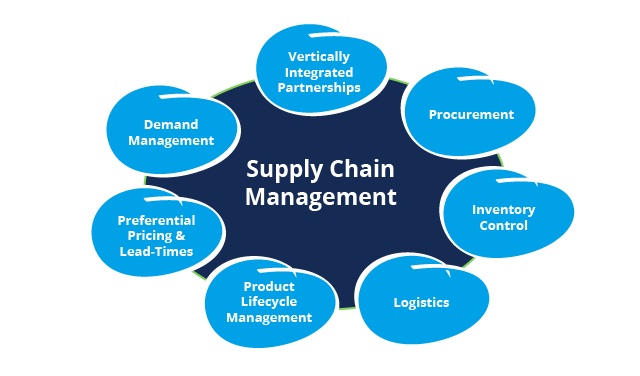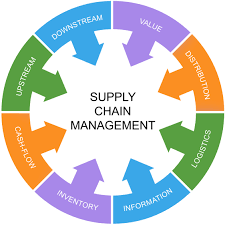
Every business has some or other dependencies. One such prominent dependency for every business in the world is Supply Chain. Supply Chain is the sequence of processes involved in the production and distribution of a commodity. It is a network between an Enterprise and its Suppliers to produce and distribute a specific product to the final buyer. This network includes different activities, people, entities, information, and resources. The supply chain also represents the steps it takes to get the product or service from its original state to the customer.
We understand the importance of Supply Chain for the enterprises. Hence, we give stress on it and we assist the enterprises that we promote / support in getting a robust and full proof supply chain mechanism associated with it.
For Enterprises with a formal planning process, or the desire to have one, there are steps to ensure that a Supply Chain strategy, tactics and action plan is developed that links with Marketing requirements to work for a longer period and deliver superior returns.
While long term goals and objectives are important, the shorter-term opportunities are of more interest, as this is the time-frame in which the current Supply Chain strategy operates.
The steps we follow in Marketing to develop strategy for the enterprises are:
a. Identify the broad market as segments.
b. Identify the segments of most potential for the Enterprise.
c. Formulate a strategic approach to each segment and often the products sold within that segment.
The first step allows Marketing to differentiate the Enterprise’s approach within one segment of the market against another segment. The second and third step enables Marketing to place competitive attributes within a segment – how it believes the Enterprise can win against competitors. These attributes can often be related to non-product aspects such as service, convenience, delivery and information – all to do with Supply Chains.
As the objective of Logistics is to provide availability of products and services for customers, the more general requirements of Marketing must be defined from the view of each of the three disciplines that are the Enterprise’s internal Supply Chains.

Develop a Supply Chain strategy for our Enterprises:
Using the Logistics strategy as an example, as each market segment has different customer needs, these must be translated into Logistics requirements. This is through using the concept of ‘Order qualifiers and winners’, which is a bridge between Marketing and Logistics. Order qualifiers are those factors that a market segment regards as the base performance requirement to be considered for an order. Order winners are the factors that are significant enough to help win orders for products within the market segment.
An Enterprise can have a situation where it sells a range of products that fall into two or more categories. These are Make to stock (MTS), Assemble to order (ATO), Make to order (MTO) or Engineer to order (ETO) and each needs to differentiate the performance objectives.
The input to generate the Logistics strategy is an accumulation of Logistics requirements for different market segments. The overall Supply Chain strategy incorporates the internal supply chain strategies of Procurement, Material Conversion and Logistics, which are informed by the current and potential structure of the core and extended Supply Chains that interact with the Enterprise. As Order qualifiers and winners change over time, Marketing and the three Supply Chain disciplines must realign at suitable intervals in response to changing phases through product life cycles and to anticipate industry or market trends.
The Supply Chain strategies define the framework of Logistics operations that execute the strategy and therefore the Tactical requirements for achieving the strategic outcomes. The Tactical requirements are then sub-divided into Operational initiatives, which in turn identify the Key actions. Of course, this does not happen without a champion to drive the process and committed people who understand the ‘what and why’, so the Supply Chain strategy can be seen to be a success and worth the effort.




